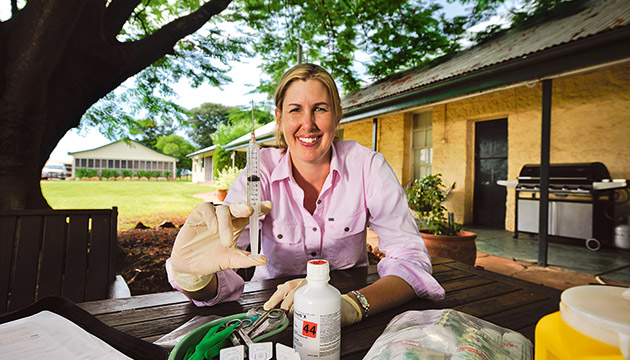Access to appropriate healthcare remains a major issue in rural and remote Australia. However, many resourceful individuals and groups are using new ways to address the challenge.
Story By Annabelle Brayley
Fiona Mitchell has to make the difficult decisions when something goes medically wrong on the remote Northern Territory station “Newcastle Waters”. As the wife of the manager Angus Mitchell, Fiona is required by station owner Consolidated Pastoral Company (CPC) to undertake advanced first-aid training. The nearest town of Elliott, 25 kilometres away, has a doctor on rotation just two weeks of the month. “We used to have a wonderful nurse based at Elliott but, inevitably, she moved on to other challenges,” Fiona says. “The health centre is still staffed but they don’t have the vast experience she had and, without a regular doctor, they don’t always have the necessary leadership skills in a crisis.”
If there’s an accident on Newcastle Waters that doesn’t involve spinal or head injuries, the patient is moved to Darwin using the station plane. However, if there’s any suspected spinal or head involvement they wait for help from the Royal Flying Doctor Service (RFDS) from Alice Springs – the station is 700 kilometres from both Alice and Darwin.
Fiona says the situation on Newcastle Waters recently improved with the addition of an RFDS medical box. As the custodian of “the box”, Fiona was required to learn how to administer intramuscular injections, which means she can, under instruction, provide pain relief before the RFDS plane arrives.
Like Fiona, there are many people across rural and remote areas of Australia who feel isolated or disconnected from appropriate services. But unlike the situation on Newcastle Waters, the problem is not always geographic. Often in less remote areas, it is lack of awareness about what is available. The Northern Territory is tackling this problem head-on with various services utilising the Imparja television network to educate people about health issues. While that in itself doesn’t solve the problem of lack of services, it does at least help ensure that more people understand what is available and where.
A special report released last year on rural/urban differences from the Australian Longitudinal Study on Women’s Health based at the universities of Newcastle and Queensland found that “rural women have poorer health in general and worse access to health services than those in cities – and the health care they get is inadequate”.
Conversely, the report went on to say that rural women respond strongly to health promotion messages, citing “breast-screening rates were highest in remote areas and Pap smear testing rates highest in regional areas”. It would appear that similar screening and healthcare measures for other conditions would be well used by rural women as long as they were aware of them.
This story excerpt is from Issue #81
Outback Magazine: Feb/Mar 2012










